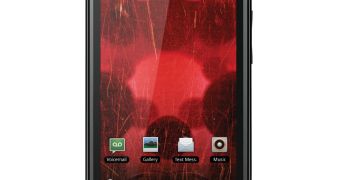Motorola DROID Bionic, the next Android-based mobile phone that Verizon Wireless will launch with support for its 4G LTE network, has just made an appearance in a video presentation on the web, offering us the possibility to learn more on what the device will have to offer to its users when made available.
The mobile phone was seen in a series of leaked shots and documents on the Internet lately, and even appeared in its own video teaser, yet now more info on it is available via the video embedded at the bottom of this article.
Overall, the mobile phone looks quite appealing, and also seems to be capable of offering great performance levels, though we'll have to wait for it to hit the shelves before learning more on that.
For the time being, however, the smartphone is said to be capable of delivering pretty good data transfer speeds on Verizon's LTE network, which should be good enough for enthusiasts. The video available below (via Phandroid) will show more on this.
At the same time, the Motorola DROID Bionic comes to the market with a series of capabilities that were not available in the previous Motorola devices, and with upgraded hardware inside.
For example, it is said to pack a 4.3-inch touchscreen display, along with a TI OMAP4430 application processor.
Moreover, it should feature an 8-megapixel photo snapper on the back, with support for full HD (1080p) video recording.
Of course, there is also the support for 4G LTE that differentiates it from other devices, but the features list of DROID Bionic does not end here.
The mobile phone would also arrive on shelves with a microSD memory card slot for expanding the available storage space, as well as with WiFi and Bluetooth connectivity capabilities.
Moreover, the handset is expected to hit the shelves with Google's Android 2.3 Gingerbread OS on board, and with support for thousands of applications available for download via the Android Market, as well as for various services that either Google or Verizon put in place for users.

 14 DAY TRIAL //
14 DAY TRIAL //